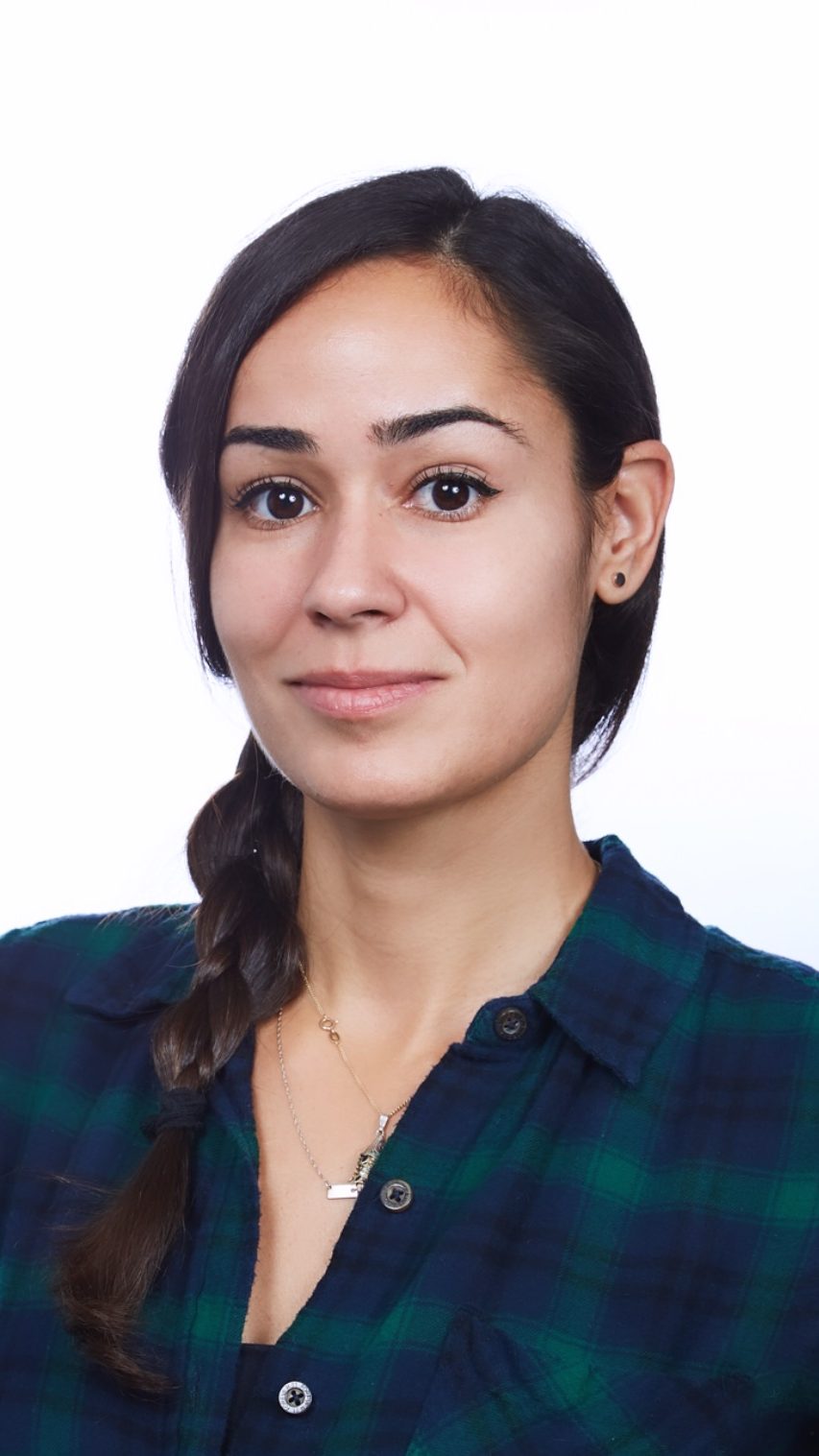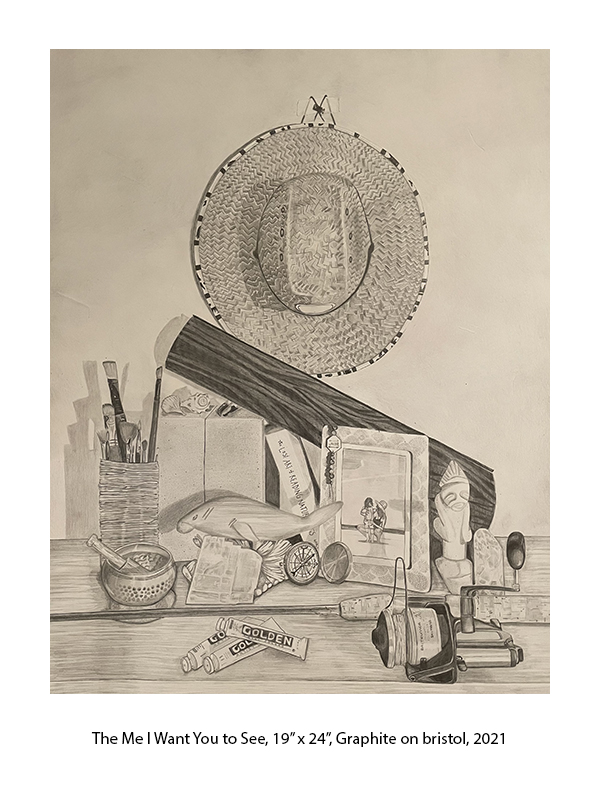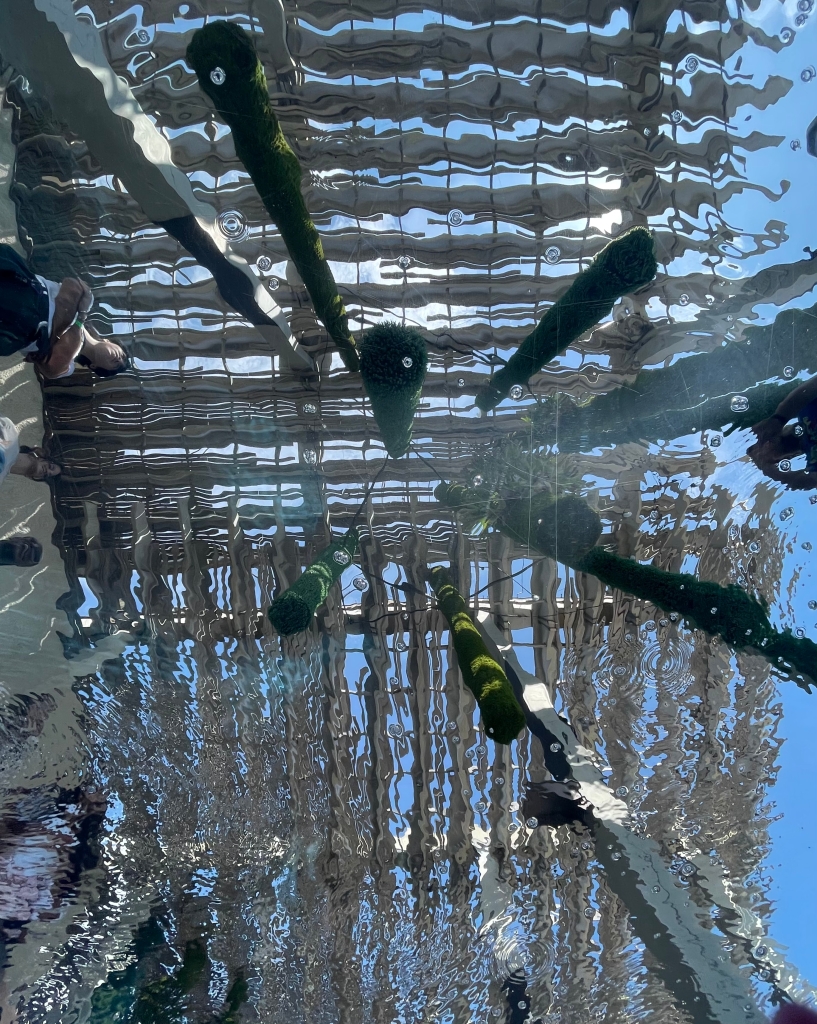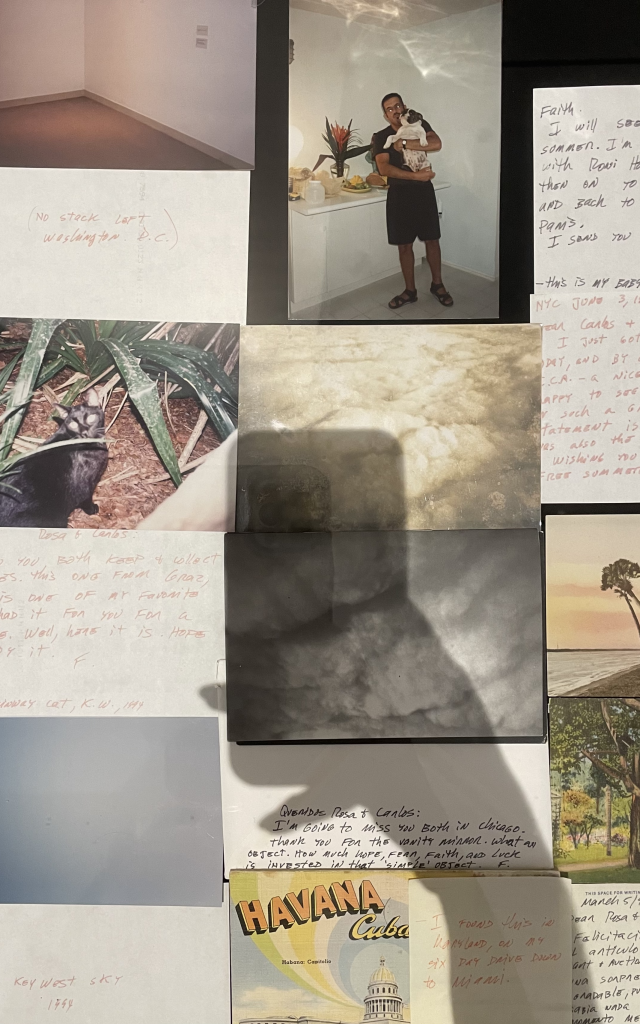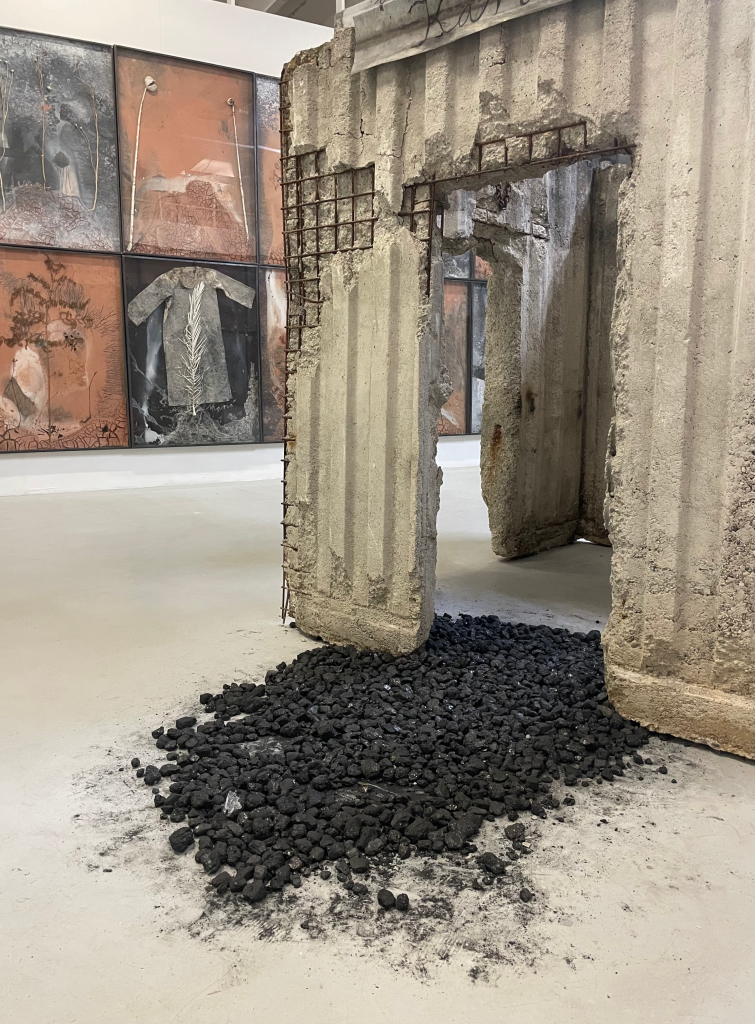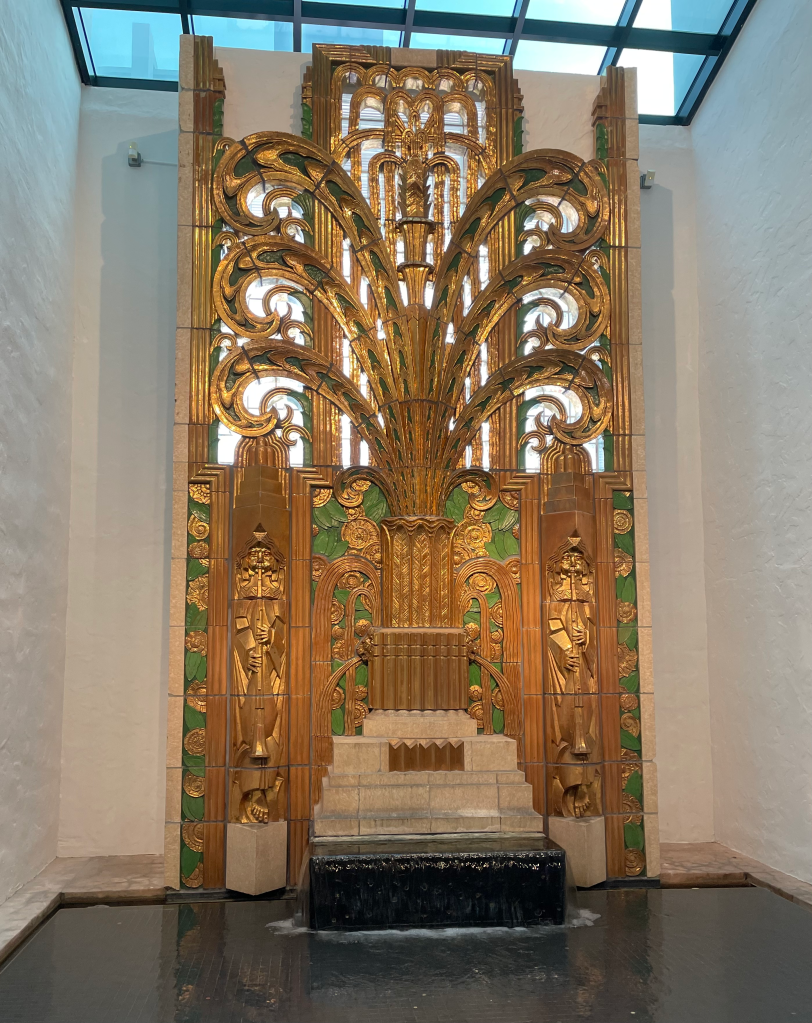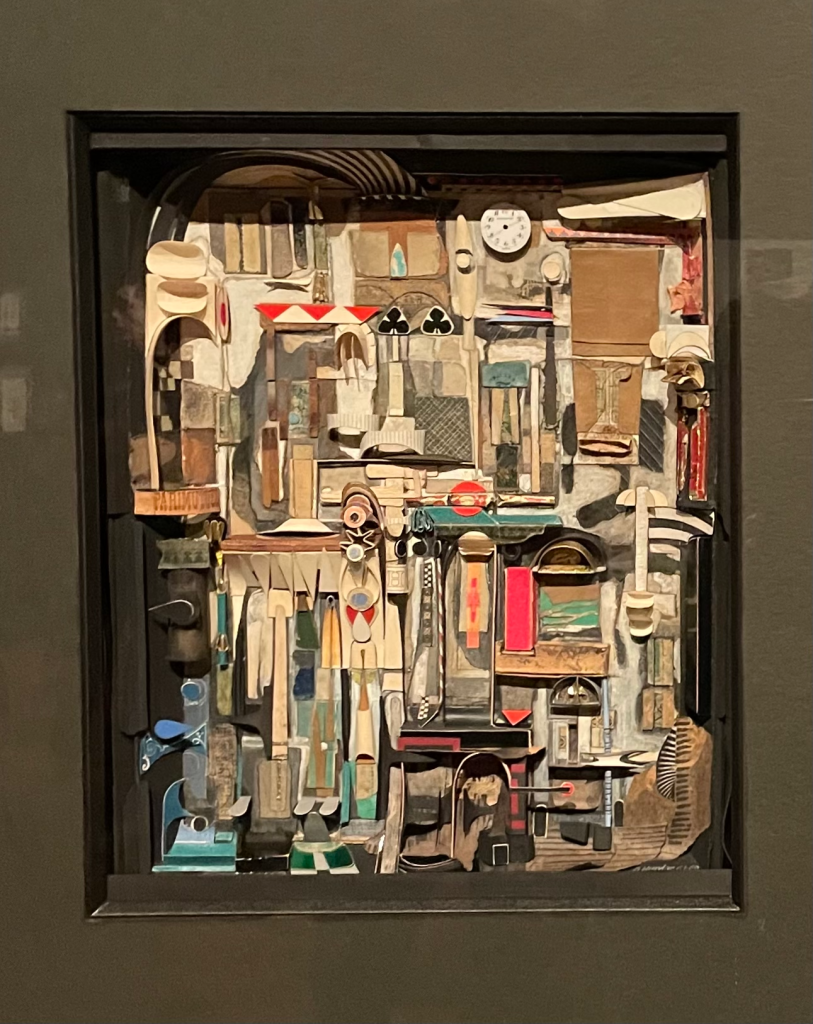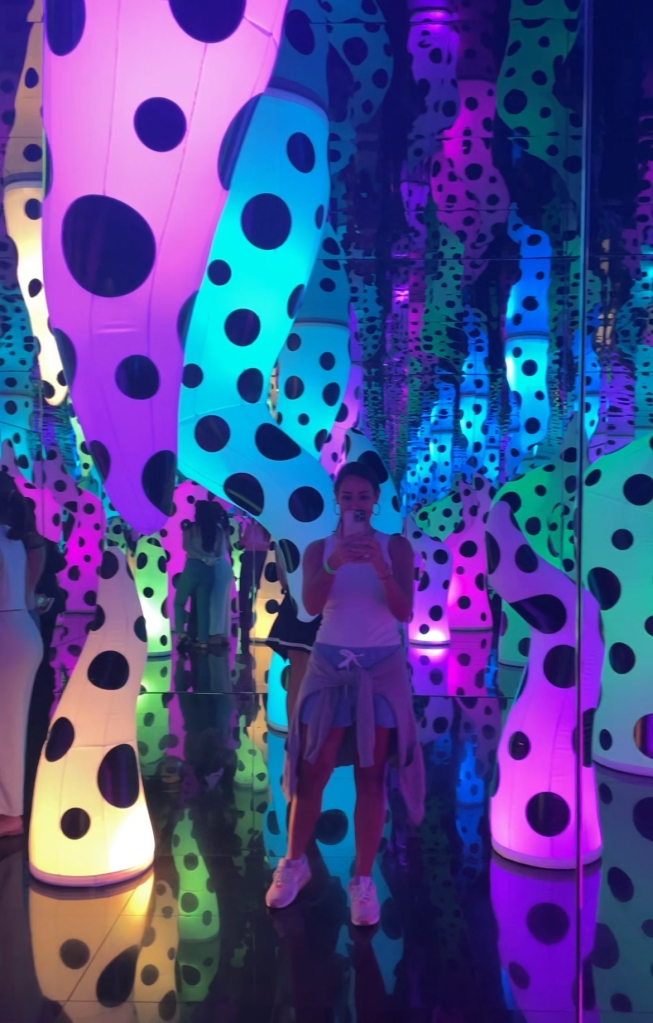
I am a Senior at FIU completing my BFA. My art practice has been mostly in drawing, but I am expanding that into ceramics and installation art. I am returning to complete my degree after many years out of school. I’ve spent that time mostly on entrepreneurship.
Miami Encounter as Text
“My Miami” by Anai Fonte of FIU, January 14th, 2024

I love Miami. This city feels as much a part of me as my own skin. I am “kind of” a second-generation native. My father was not born here but came from Cuba when he was only three. I started my life in the most iconic part of Miami, South Beach. My mom was temporarily living in a motel while my father was a fugitive from the law. My mom gave birth to me at Mount Sinai Hospital, and my father turned himself in in exchange for being able to see me. After what I assume was a short stint in jail, he acquired The Surfcomber Hotel on South Beach, no doubt through some unscrupulous business dealings. This was probably 1984-85, South Beach was not glitzy or glamorous. It was a tired town, filled with retirees and newly arrived Cubans. These were my first years in the Magic City.
We later moved to “El Norwess” just outside the airport when I was about six years old. My parents split around that time, and I lived exclusively with my mom. My mother was strict and a bit of an isolationist. I experienced little outside of my neighborhood. For this reason, I believed Miami was 99.9% Latino, and Spanish was the primary language. It wasn’t until my freshman year of high school that these perceptions changed.
On my first day of high school, I attended all my classes. On my second day, I cut math. On the third day, I didn’t show up at all. I had my first taste of freedom. I wouldn’t return to a classroom for about three months, only after CPS knocked on my door. What did I do this entire time? I’d get dressed for school every morning. I’d meet with the same group of friends outside our school at the 711. We’d then hop on the bus or train without a plan and just see where we ended up.
I often wonder what people thought when they saw us, fourteen-year-olds in JNCOs and green hair, on the train during school hours. The streets of Miami had become our classroom. We would take the train to Dadeland and eat all the free samples at the food court since we had spent our lunch money on public transport. We’d go Downtown, wander each dirty street, and enter each electronics store. We once took the Tri-Rail to West Palm Beach only to realize we only had enough time to ride it back home to ensure we’d be home when we were expected. We explored every neighborhood we could and would hang out with whoever would engage with us. It was the Grove that won my heart, though.
The first time we ventured into the Grove, we ended up at the Hare Krishna temple. They fed us, gave us candies and flower leis. They were beautiful people who shared wisdom with me that I still draw on today. The hippies smoking pot in the street often talked about politics, the ever-changing world, music, love, and art. I loved getting lost in the canopy-lined streets and finding old bungalows and cottages adorned in wacky colors and an assortment of lawn ornaments. It was the Grove that I kept wanting to return to day after day. I vowed that if I stayed in Miami, this is where I wanted to live, and ultimately I did.
The years passed, and I saw the Grove I fell in love with slowly dying. Tiny bungalows were replaced with cold concrete boxes. Trees destroyed. Hippies were replaced by yuppies. VW Vans replaced by Tesla’s. Hare Krishna replaced my women in Lulelemon and Cartier bracelets. I then pulled back and realized much of Miami had gone this way. I don’t want to say I am disillusioned, but it feels like the Miami I grew up in is just a memory. I want to love this new version, but it’s hard not to reminisce about what was. I hope to cultivate a new relationship with Miami through this course, enjoy some of my favorite places, and learn new things about our beautiful home.
Historic Miami/Overtown as Text
“In The Name of Progress” by Anai Fonte of FIU, January 28th, 2024

There is no artist I enjoy listening to more when I am in the throws of a creative fit than Otis Redding. His vinyl, Lonely & Blue, is spinning as I write this. Indeed, no other genre puts me into flow quite like soul. Knowing my topic today, I wondered if Otis had ever performed in Overtown. A Google search brought me to his performance on October 10th and 11th, 1964, at Clyde Killens Island Club in Overtown’s Little Broadway. This would have been just after I-95 tore through the neighborhood while segregation was still part of everyday life. Although before my time, I knew about the vibrant entertainment hub Overtown once was and that I-95 had played a critical part in the decline of the neighborhood. However, it was a distant, abstract historical event in my mind, that is, until I heard Mrs. Godfrey speak.
We visited with Alberta Godfrey, a long-time Overtown resident, at the Greater Bethel church, founded before the City of Miami in 1896. She shared a moving and personal account of what Overtown used to be, standing just in front of where Dr. Martin Luther King Jr. delivered a speech about the importance of not limiting access to polls and his vision of equality in 1958. There is something in being in a physical space with someone when they retell a story that makes it come to life in a way that a YouTube video never will. You feel the energy of their words; you share the emotion with which they deliver their message. It’s moving, and we shared with her, at that moment, the importance of Greater Bethel and Overtown. The city turned its back on Overtown in 1957 when it chose to run I-95 straight through the neighborhood, and it continues to turn its back by allowing the demolition of iconic buildings in the community and the lack of acknowledgment of previous wrong-doings. Some 70 years later, can we say our local politics have improved?
I recall a quote by Dr. Martin Luther King Jr., “We need leaders not in love with money but in love with justice. Not in love with publicity but in love with humanity. Leaders who can subject their particular egos to the pressing urgencies of the great cause of freedom…..a time like this demands great leaders.” Like Mrs. Godfrey said, she is not opposed to progress, and I agree progress is critical to a city’s prosperity, but so is preservation. Miami sells its history to the highest bidder with secret handshakes and backhand deals. The little history we have is being paved over for yet another “luxury” high-rise only wealthy Miami part-timers can afford. Places like Greater Bethel need to be supported and preserved for our children and our culture as a city. As we all gathered in the church, just across the street where Overtown’s first schoolhouse stood a few months before, another massive development was underway. The only legacy our local government seems interested in preserving is corruption and destruction. Dr. King knew back then that what we need is great leaders. Where are Miami’s great leaders?
(n.d.). October 10-11, 1964 Island Club, Miami, FL. Concert Fandom. https://concerts.fandom.com/wiki/October_10-11,_1964_Island_Club,_Miami,_FL
(n.d.). Clyde Killens’ House. Going Overtown. https://goingovertown.org/listing/clyde-killens-house/
Weaver, J. (2023, September 23). FBI investigates developer’s payments to Miami’s mayor as SEC digs into company’s finances. The Miami Herald. https://www.miamiherald.com/news/local/article276193691.html
Garcia, D. (2023, June 1). Miami Commissioner Joe Carollo found liable in federal civil case, ordered to pay $63M. WSVN. https://wsvn.com/news/local/miami-dade/miami-commissioner-joe-carollo-found-liable-in-federal-civil-case-ordered-to-pay-63m/
Beard, E. (2016, Jan 18). On Leadership: Dr. Martin Luther King, Teaching, and Alpha Phi Alpha. Teach for America. https://www.teachforamerica.org/one-day/ideas-and-solutions/on-leadership-dr-martin-luther-king-teaching-and-alpha-phi-alpha#:~:text=“We%20need%20leaders%20not%20in,like%20this%20demands%20great%20leaders.”
Deering Estate as Text
“Time Travel” by Anai Fonte of FIU, February 10th, 2024

We could not have asked for a more perfect South Florida day to embark on a hiking adventure. The mosquitos were nonexistent due to the recent cold nap. The skies were blue and the air crisp. These are the days all the North Easterners moved here for. It is January 31st, the last day of the month, and we are visiting The Deering Estate in Palmetto Bay. Living in Miami my whole life, I have only ever been here a handful of times. In truth, I had little knowledge of the vastness of the property. I believed it to be a historic home on the water and not much else. However, we adventured past a restricted sign and onto a barely marked trail, and I was immediately consumed by the density of forest with which the home shares its land.
When you think of Florida, I do not believe most people would associate the state with the Mesolithic or Neolithic era, yet here I stood at the Cutler Dig Site, which contained traces of human activity from just then. To reach the site, you traverse a dense hardwood hammock forest and many, many spider webs. You then come upon a deep hole in the limestone, which I estimate is no more than 20-25′ in circumference. Excavators have found sabertooth tiger teeth in this ancient hole, an animal believed to have gone extinct 10,000-12,000 years ago. However, there is no proof that the humans of the area interacted with these ancient animals. The proof of human inhabitation of the area came from small game remains that were scorched and cut, evidence of having been cooked and eaten by our prehistoric ancestors.
I’m a sucker for pretty water; it mesmerizes me. What an incredible delight to find a crystal blue pocket amongst the mangroves. It was the unmistakable indicator of a headspring. Where there is fresh water, there are humans. At this point, I am starting to understand the magic of this place. Just a few feet from the spring, you find evidence of human inhabitation. This area was home to the Tequesta, the indigenous people of South Florida who no longer existed by the 1800’s. Their tools, fashioned out of shells, can be found all along the forest floor. In the absence of iron, a conch shell made for a valuable material to assist with various tasks.
We now ventured into what I will remember as the “squishy” part of the hike. I wore water shoes, but since the water had receded entirely, I was walking on what felt like a wet sponge, with each step, water, and muck squirting through the holes of my water shoes. It was a sensory experience, for sure. As we continue to walk, we begin to see slivers of what appears to be a sizeable manmade object. It is difficult to discern what it is exactly until you are within steps of it. A plane. A crashed plane in the middle of a mangrove forest. We are told that the passengers and pilot must have survived since no human remains were found with the wreck. It is believed to have been a drug-running plane. I could hear the Scarface theme song as I moved around it, peering in windows to see if the drug runners left anything interesting behind, but the swamp had claimed the plane, or more correctly and less dramatically, the mangrove forest.
We walked over five miles through 10,000 years of history and nine ecosystems in just over five hours. It was a wild ride from Mesolithic dinner tables to evidence of Miami’s main import of the 80s and so much more I couldn’t share in just five hundred words. A truly epic day I will cherish, and I am incredibly grateful for.
Austin, Daniel W. (1997). “The Glades Indians and the Plants they Used. Ethnobotany of an Extinct Culture.” The Palmetto, Retrieved February 10, 2024
Saber Tooth Surprise. (n.d.). National Geographic. Retrieved February 10, 2024, from https://www.nationalgeographic.com/science/article/saber-tooth-cats-surprise-fossils-redraw-picture-of-big-cat#:~:text=Her%20team%27s%20comprehensive%20study%20also,10%2C000%20to%2012%2C000%20years%20ago
Dig This: Public Archaeology in South Florida. (2017, February 21). Retrieved February 10, 2024 Site file: Cutler Fossil site. Dig This! Public Archaeology in South Florida. https://digthispublicarchaeology.wordpress.com/2017/02/21/site-file-cutler-fossil-site/
Vizcaya as Text
“Dona præsentis cape lætus horæ ac linque severe” by Anai Fonte of FIU, February 14th, 2024

It is Valentine’s Day, and although I did not know that morning when I was rushing out the door, it was the perfect day to set the stage for our visit to the Vizcaya Mansion and Gardens. The day is sunny, and the air is crisp, and I am excited to revisit this Miami icon. I had only ever been there once before, residing it to something tourists do, and I was twelve then. I can’t say much stuck in the way of any history about the property from that visit, but I have always wondered why his bed was so short. That definitely preoccupied my twelve-year-old mind. What consumed me this visit was absolutely different. I was not anticipating that I would fall in love with this place or be carried away in intoxicating fantasies, envisioning what life would have been like as a guest of James Deering at one of his lavish parties.
The Vizcaya Mansion sits on the edge of Biscayne Bay and is perfectly nestled between Coconut Grove and Brickell. It is the transitory space between the lush, spacious landscapes of the Grove and the densely urban Brickell. In many ways, the home itself has always been an institution of transition. When it was built in 1914, it was the vehicle that transitioned South Florida from the harsh tropical and wild place it was to a luxurious, hedonistic party hub, much like it remains today. I fully agree that James Deering, the owner and visionary of Vizcaya, should be named the patron saint of Miami. Long before Versace on South Beach, Deering paved the way for this city’s visitors and residents’ seemingly insatiable appetites for all vices.
Dona præsentis cape lætus horæ ac linque severe, Take the gifts of this hour joyfully and leave them sternly. This is the inscription of the sundial above the entrance to the mansion. The early 1900s version of what happens in Vegas stays in Vegas, except it’s Vizcaya. A reminder to all his guests arriving that this is a place to delight in the present.
Looking across the way from the sundial is a barge constructed as a breakwater, but in typical Deering fashion, it could not be just a boring breakwater, and just like that, Miami had its first “party boat.”
This place captures your imagination. I see myself in a long, flowy gown, running into the gardens to escape the crowd. It’s a cool and breezy Miami winter night. The sky is clear – you must have been able to see all the stars, even the Milky Way. You can hear loud laughter and music in the distance and are in pure euphoria. You stumble into one of the secret gardens and find two lovers whose union, for whatever reason, would be considered inappropriate, in full coitus. Scandals of the Gilded Age and still everyday debauchery in Miami.
Today, I saw a side of Vizcaya I never knew. When I visited as a kid, I doubt much of what we learned about secret love meetings and passes that connect bedrooms would’ve been discussed. Time was sadly limited, so we never made it to the bedrooms. Where I am sure we would’ve learned about more steamy rendezvous, but I am left wondering why his bed was so short?
Everglades as Text
“Restore the Flow” by Anai Fonte of FIU, March 17th, 2024

Photograph by Anai Fonte // CC by 4.0
When I was first considering whether or not I should join the honors college, this course, Miami in Miami, and the photo of a student hiking in the Everglades gave me the final push to join. Although I started my honors journey with the Art in Miami course, I eagerly anticipated this class in particular. The Everglades is a place I hold close to my heart. It is the other side of home. On the one hand, we have the tropical, vibrant, busy city, and on the other, the slow-moving, natural wonderland of the Everglades. I grew up fishing in these waters and riding skiffs in the shallows amongst spoonbills, sawfish, and many other unusual creatures you’re unlikely to see anywhere else.
Even though I spent a great deal of time adventuring in the Everglades, I had never gone Slough slogging. It was something that, for a long time, intimidated me. I’d ask friends to come along, but there were no takers. I knew if I ever wanted to experience this, I would have to go alone, but I am not that daring. Luckily, Clyde Butcher, the photographer best known for his black and white images of the Everglades and ghost orchids, raffled off a guided slough slog on his beautiful property bordering Big Cypress National Preserve, and I won. It was a wonderful hike that made me confident in pushing myself further to explore on my own.
The guided tour with the Everglades National Park Ranger, Trent, differed. Both were wonderful. Clyde’s tour focused on the local ecology, while the Ranger-led one shared a little of everything, including history. Trent was such an engaging speaker, and I learned so much from him, including that human activity in the area predates the Everglades. I had always thought of the Everglades as an ancient place and had no idea how young it was. When he read the poem as we stood in knee-high water just within the cypress dome, it will be a memory I cherish forever.
One of the most spectacular things about the Everglades is how quickly it changes and how, with every visit, you see something new. Before our trip there, I had been there just a couple of months before. I had pulled up to the side of the road to sketch a couple of deer I saw in the field. I sat in the back of my truck for an hour, sketching the deer, dragonflies, wildflowers, and plants. I then drove off to another area to see what else would catch my eye and continued my day. We returned to where I was just at and hiked in a few feet. There was a substantial water-filled hole I had missed the last time I was there. Absolutely incredible.
The Everglades is the lifeline to South Florida, providing water to millions of residents. A few years ago, we started experiencing problems with algae blooms, creating record fish kills and spewing toxic gasses into the air, forcing seaside resorts and restaurants to close. I spend a lot of time on the water, from fishing to diving and paddling. This was something that impacted me deeply. I started looking at what could be causing this and found a non-profit organization, Captains for Clean Water. Before we developed South Florida, water would flow freely from Lake Okeechobee through the Everglades; this is something Trent touched on. Once Agriculture spread in this area, primarily big sugar companies diverted water for their use; additionally, the areas were being developed for housing. For this reason, the Okeechobee Lake no longer flows, and when the water gets too high, polluted water is discharged East and West, causing massive problems for the coastal communities. The solution is to restore the natural flow of the Everglades.
The Everglades’ importance cannot be understated. From its biological diversity and many ecosystems to being the source of drinking water for millions of people, we must protect and conserve this glorious river of grass.
Chicken Key as Text
“Cruelty-Free” by Anai Fonte of FIU, March 30th, 2024
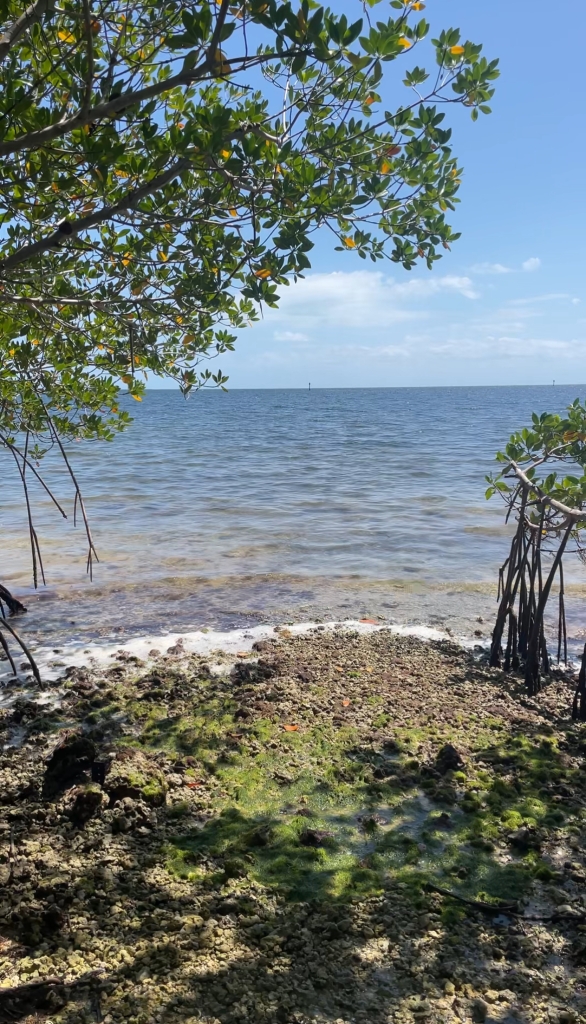
We’re back at Miami’s magical Deering Estate. Instead of exploring the lush woods on the property and the over ten thousand years of history, we are heading to the water this time. Chicken Key is just a mile off land, a small nature preserve part of the Deering Estate. It was a windy day, and the paddle was a tough one. We followed close to the mangroves to block the wind, and about halfway to our destination, we took a reprieve in a gorgeous mangrove tunnel. The water is crystal clear; we would learn that the water flowing here comes from the Everglades. We stopped for some photos and to take in the glimmers of sunlight filtering through the dense mangrove branches overhead. Unfortunately, a few of us were new to canoes and ran right into Professor Bailly, who was the first to take a swim that day. Everything was recovered except a water bottle that was now impossible to locate because the water was churned up. We set across the bay, leaving the wind barricade provided by the mangroves and braved open water to our final destination, Chicken Key.
When we arrive at Chicken Key, there is no beach or dock, so we tie our canoes to a few low-hanging branches. It didn’t always look this way. In an 1899 survey, S.H. Richmond recorded a maximum elevation of three feet and that it was characterized by a sand beach and low dunes. The island was formed by ocean currents moving quartz and limestone sand deposits. The dunes were destroyed by dredging in 1940, which elevated the island from three feet to ten feet. Nonetheless, the island is beautiful and uniquely untouched by development.
We start to venture into the island, and just a few feet from the shore, we walk into a scene of chaos. A mountain of trash surrounds the small firepit where a humble campsite used to be. A deflated raft, sign posts still on their concrete bases, and even an above-ground pool ladder. No doubt, these were items that had already washed ashore and were collected to create a makeshift shelter for a group of partygoers. We pull up our sleeves, grab some bags, and get to cleaning.
From where we entered, I followed the shoreline to the island’s opposite end. I pick up little items as I walk along: plastic bottles, cups, caps, lots and lots of plastic. There were also several mangroves entangled with buoy ropes, which I cut them free from. Amongst the more interesting finds were these lavender snail shells and a tiny cocaine bag with some still in it—no worries—that got tossed, too. But I think the one thing that I picked up that I found profound was a label from a vegan, cruelty-free product, free from harmful chemicals, organic, etc., the list rattled on. Here it was, this “innocent” and “safe” product label contributing to the pollution in a natural environment; the irony was not lost on me.
Chicken Key is a special place; it is a sanctuary for endangered butterflies, a rookery, and a natural habitat of which there are less and less of so close to urbanization. It was my absolute pleasure to do my little part in helping keep it pristine. The campsite was revealed after the garbage mound was cleared, and if you can believe it, Professor Bailly found the water bottle. If that wasn’t epic enough, Manatees were waiting to greet us back at Deering Estate. Perfect day.
South Beach as Text
“The Miami You See in the Movies” by Anai Fonte of FIU, April 10th, 2024

Photograph by Anai Fonte // CC by 4.0
It’s another gorgeous Miami day to explore, and this time, we visit a personal favorite: South Beach. Unusually running late this morning, I made up for missing my morning run by sprinting from the Seventh Street garage to South Pointe Pier, arriving just a touch late and a sweaty mess. The stress from the run and being late was quickly forgotten when I absorbed the view: the expansive beach and endless ocean. In the distance and across the jetty, we can see our next destination, Bill Baggs State Park, better known locally as El Farito. Closer to us is Fisher Island, the wealthiest zip code in the nation. We pulled up Zillow as we set out for our walk on Ocean Drive to pick which homes on Fisher Island we’d be putting offers on; three milly, no biggie.
South Beach is known worldwide for its neon lights and Art Deco. It’s been featured in countless movies and music videos. While most people can recognize the iconic style of architecture as Art Deco, few know its origins. Even I, as an art major, didn’t fully know the story. For most of history, we have been looking back for architectural inspiration to the Romans or Greeks. However, in 1922, when the tomb of King Tut was discovered, the world was made aware of a whole new aesthetic unlike anything anyone had seen before. This, paired with the Industrial Revolution, gave birth to the Art Deco style, making it unique. Now that I know this, I’ve connected the schematized facades and ziggurat roofs. I cannot unsee it! I also learned that the other dominant architectural style in Miami and South Beach is MiMo, pronounced My-Mo, not Mee-Mo, which I’ve been saying wrong for a long time.
On the walk, we stopped at a bust of Barbara Baer Capitman. It was my first time hearing of her, but I was fascinated to learn about yet another woman pioneer of Miami. In 1976, Capitman formed the Miami Design Preservation League, ensuring that Miami Beach’s iconic art deco buildings would not be torn down and built over, as so much of Miami has, but preserved. The mainland could use someone like her right now.
I had the most awesomest lunch at La Boulangerie and then went on to finish our day on South Beach at the Jewish Museum. The building was the first and only synagogue in Miami Beach in 1929. At the time, Jews were not allowed to live beyond Fifth Street. The Jewish community grew so much that the synagogue built another building directly next to the original to keep up with demand. As you walk through the old alleyway that used to separate the buildings but now is enclosed, hung on the walls are vintage anti-Semitic propaganda, images, letters, and items. It is surreal. You look at dates and realize this was not that long ago. In light of all that’s happening today, I applaud the museum for ensuring we do not forget the world many once lived in.
Final Reflection as Text
“I See You Now, Miami” by Anai Fonte of FIU, April 20th, 2024

Photograph by Unknown // CC by 4.0
It’s hard to believe we’ve come to the end of the semester this quickly. It was just a blink, and here I am writing my final reflection. As I type these words, I can’t help but feel some sadness but, at the same time, a tremendous amount of gratitude. When I first started this semester, I approached this class from the perspective of a Miami lifer. Which, of course, I still am. There has been one fundamental change in my perception of Miami, though. One I would not have arrived at had it not been for what I learned about our Magic City through the course of the semester, which was truly unexpected.
Over the last few years and especially since COVID, I have seen our city change in ways that the Miami I loved seems but a sliver of itself. Miami has become the hottest place to live for people from California and New York, and it has drastically changed the landscape and culture, and not in ways I feel are an improvement more like a death of all that I loved. I will not lie; this has made me salty, and I have struggled to accept this new Miami.
About a year ago, I was living in a duplex and shared a wall with an incredibly nice older man who, like me, was a Miami native, except he was 70 and had seen even more changes than me. The wall we shared was not very thick, and often, I could overhear his conversations. On one of these occasions, I overheard him talking on the phone, and he was saying how all the Latinos in Miami now know what it feels like to have their city overtaken by outsiders. I didn’t know how to feel about that at the time.
We started the semester in Overtown, where we met Alberta Godfrey, who has been in Miami longer than my previous neighbor and I. She shared with us how Overtown had transformed from this bustling, growing neighborhood into a shell of what it was once with the construction of I-95 through the heart of it. At Deering Estate, we learned about how the Spaniards pushed out the original natives and Tequesta. James Deering of Vizcaya introduced decadence and debauchery to what was a wild and untamed natural area at the time. In the Everglades, I learned this magnificent landscape was only 10,000 years old, having been birthed at the end of the last ice age. More recently, South Beach has gone through several re-births of its own.
So, how have I changed? What was the unexpected thing I learned? I’ve spent the last few years holding on to my version of Miami as if it was the one true version, as what I believed it to be is the only thing it was. I was wrong. If one thing is true of Miami, it is ever-changing by new waves of people coming here. This is the truest Miami there is. It’s not my 80s Latin run version of it, not the previous predominantly Anglo-Fisherman Village version of it, or any before that. Miami is in constant flux, and I have grown to respect and appreciate it.
Thank you infinitely, Professor Bailly, for the ways in which you have transformed the way I see our city, art, and myself in both.
